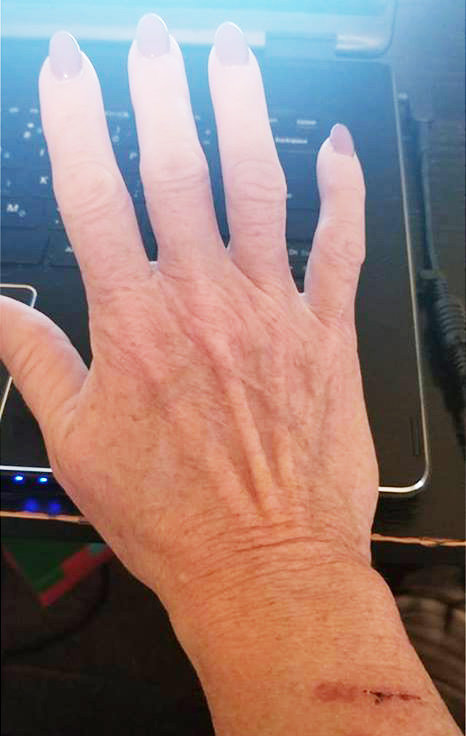Looking down at my wrist, I didn’t have to think long before coming up with today’s blog topic. Puppy biting, ahhhhh…those wonderful/horrible little piranha teeth. The above image is where Mr. Riggs raked his ever so sharp k9 across my wrist. My husband and I had been away for five days at a family event; and when we returned home, both Elsa and Riggs were over the moon with joy. Well, this is how it played out for me.
As I stood soaking up the blood dripping from my arm; I discussed the past five days with my pet sitter. We were both surprised by the scrape because Riggs is very much a soft mouth. I feel very lucky to have a lesser piranha that many puppies. Oh, I’ve had really bad piranhas over the years. Both Tilley and Elsa were horrible piranhas; and I clearly remember hearing “MOM” when my kids couldn’t handle the biting.
Let me just put this out there…
PUPPIES BITE
Puppies bite and they should bite so that we can teach them to bite/nip gently. Puppies who never lay a tooth on another creature never get the feedback required to learn how to use their mouths correctly.
The first thing that many new guardians do when I arrive for a training session is to very angrily say “NO BITING” as their puppy begins to feel me out. I quickly let them know that I am fine and that I want to gauge their puppy’s bite inhibition. As I talk to my new clients; asking questions about their puppy, I am being chewed upon and assessing.
Bite - to cut, wound, or tear with the teeth:
Inhibition - a restraining, arresting, or checking of the action of ;
Puppies need feedback, it is how they learn. Without feedback how are they to know if their biting is bad or not? So when I address nipping it starts out with the hardest biting and moves on from their. We offer feedback for the ouchy bites first. Then move onto the lesser and lesser pressure bites. Finally moving onto the “no teeth on skin” rule. This rule is the k9 guardians to make or not.
Having your puppy play with other dogs can really assist with bite inhibition. Other dogs will let your puppy know when they are using their mouths incorrectly. Other dogs will yelp or scold a puppy for biting too hard. This is what we need to do as well. Paying close attention to the pressure of a bite; offer feedback for the hard ones. A loud “OUCH” is typically enough feedback for a learning curve. But if you have a puppy that does not respond to a loud “ouch” then leaving the room abruptly may be required.
Action/Reaction
The scrape shown above on my arm was from an over exuberant k9 tooth raking across my arm in joy. Riggs was doing the very typical arm hold greeting. Unfortunately puppy k9s are the last to go. He has lost the bottom right one but still has three more. I will be more than happy when they are gone.

